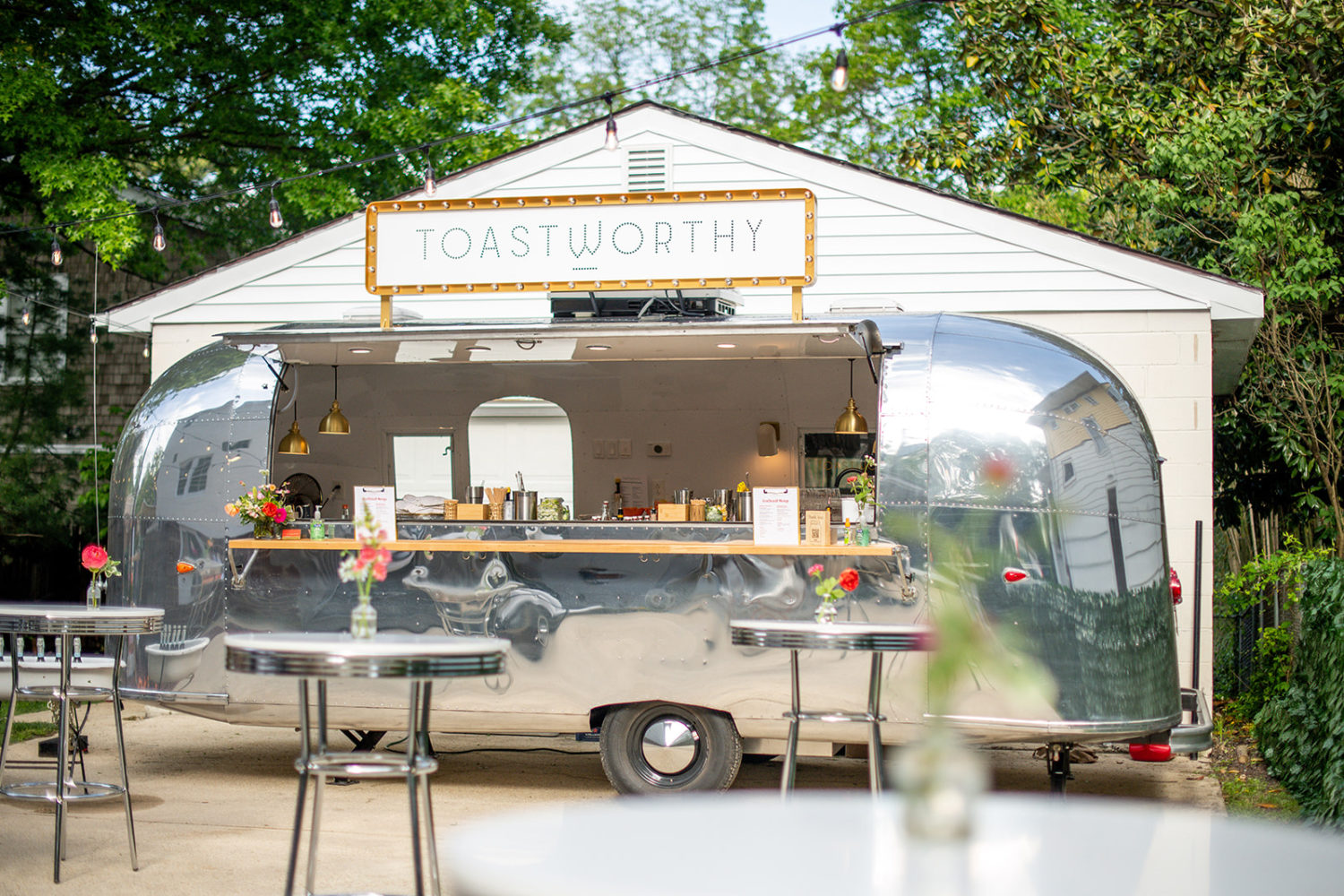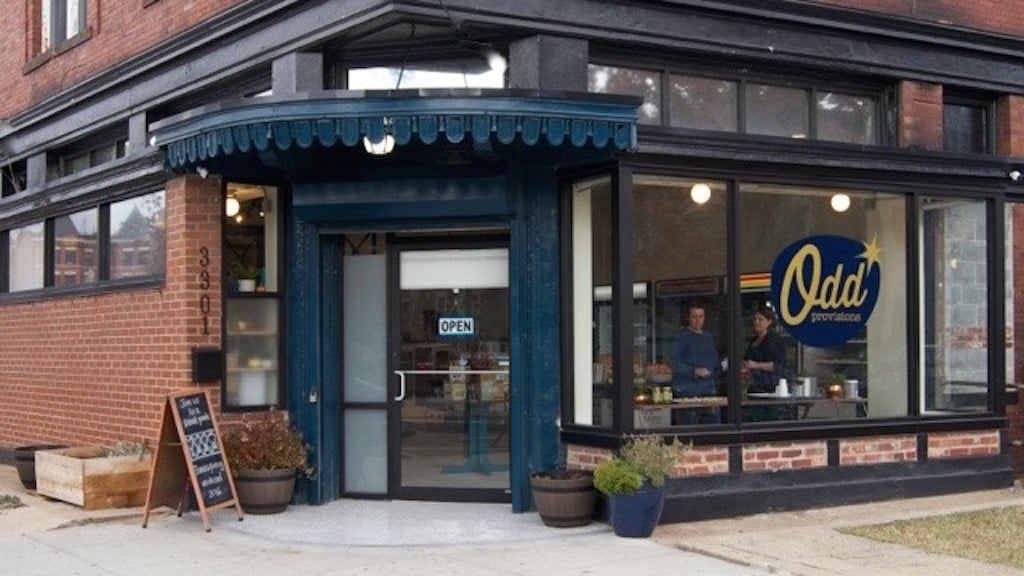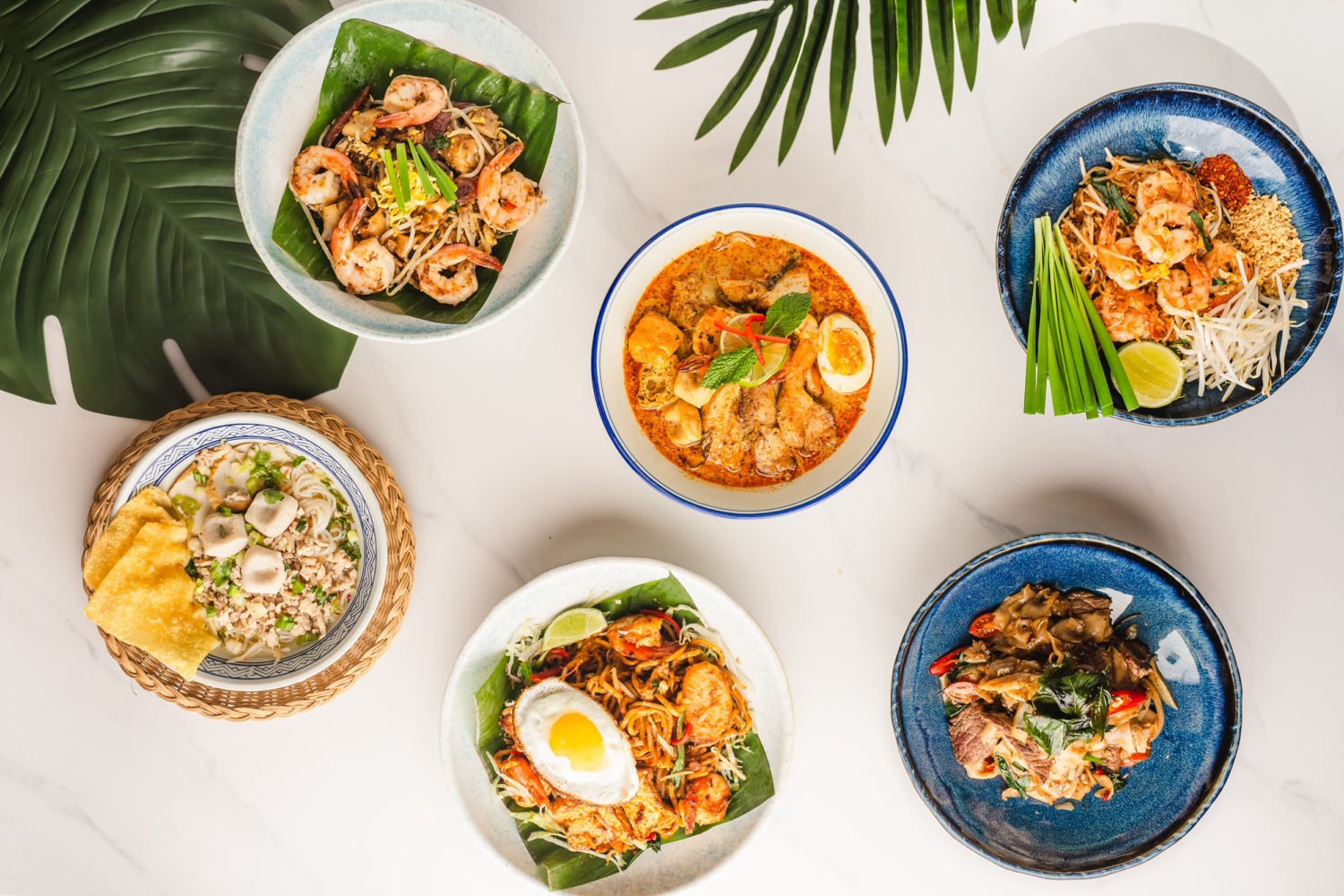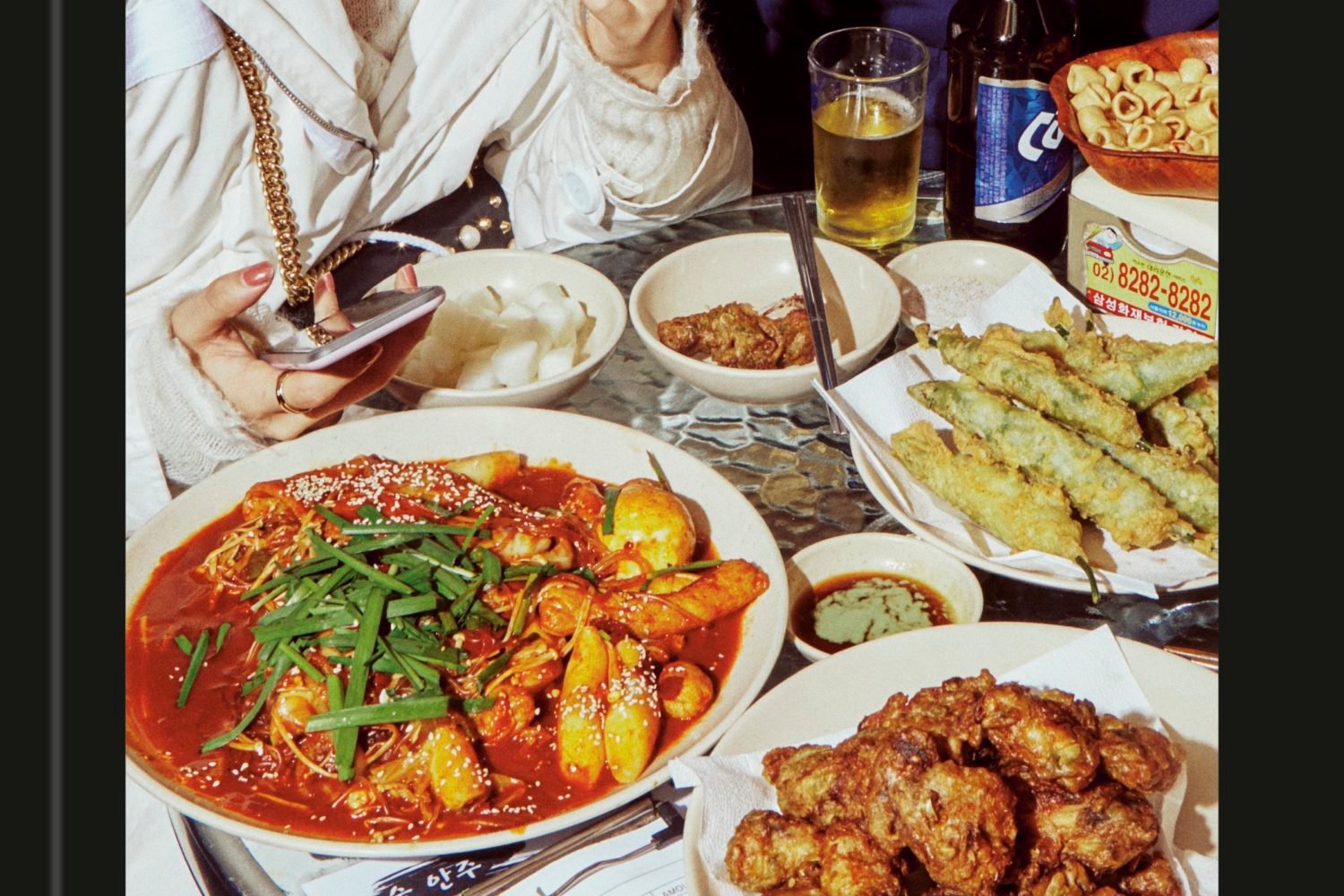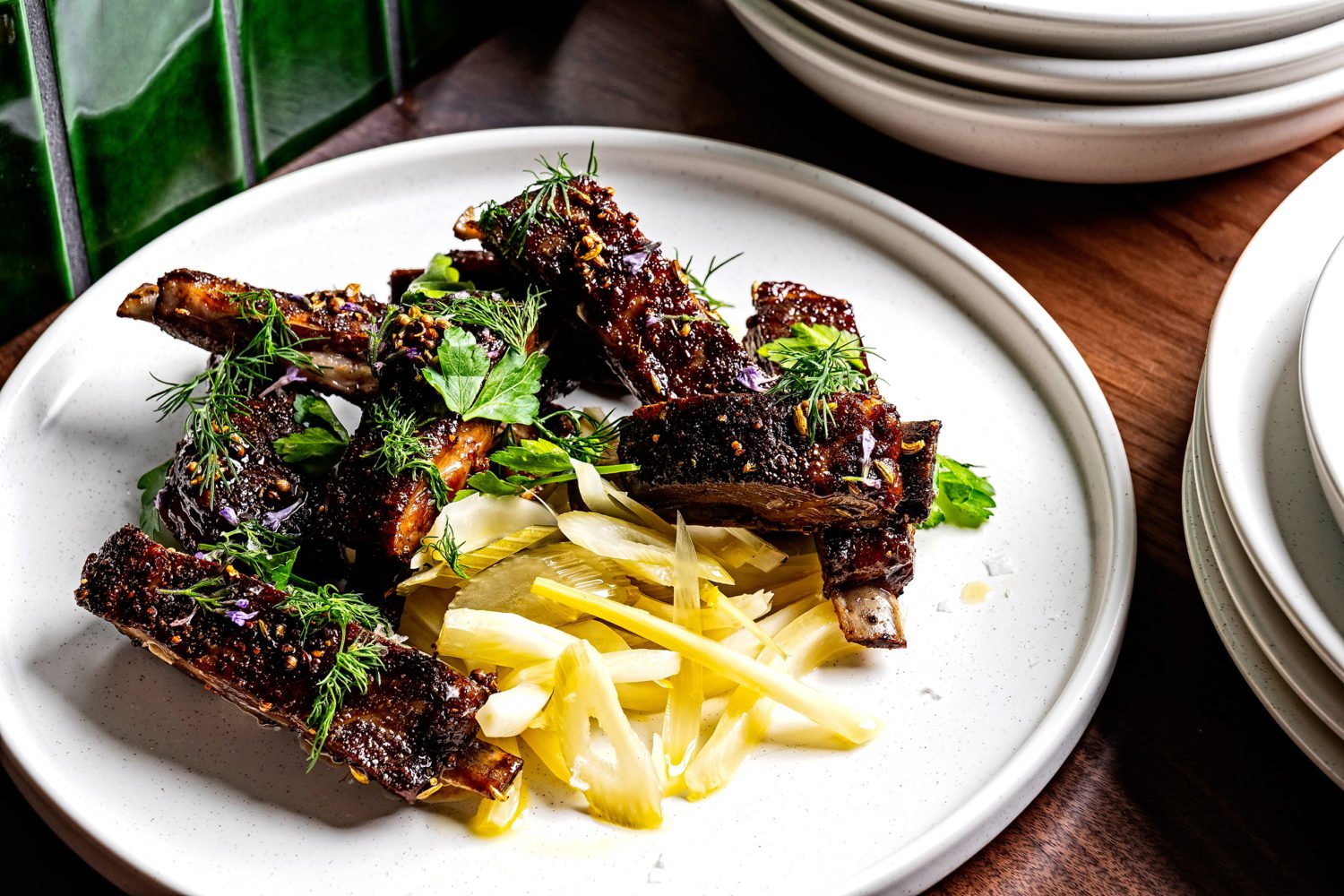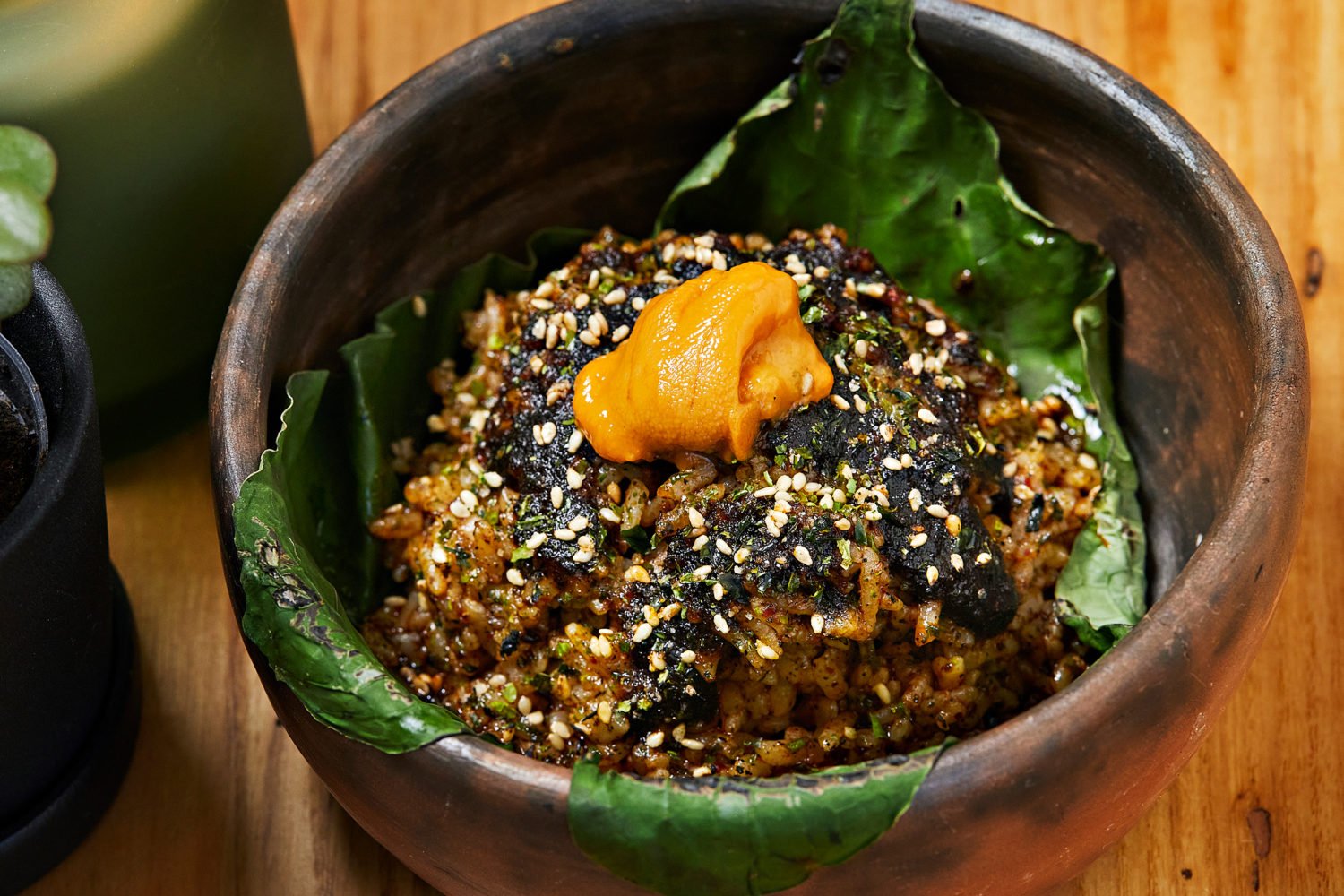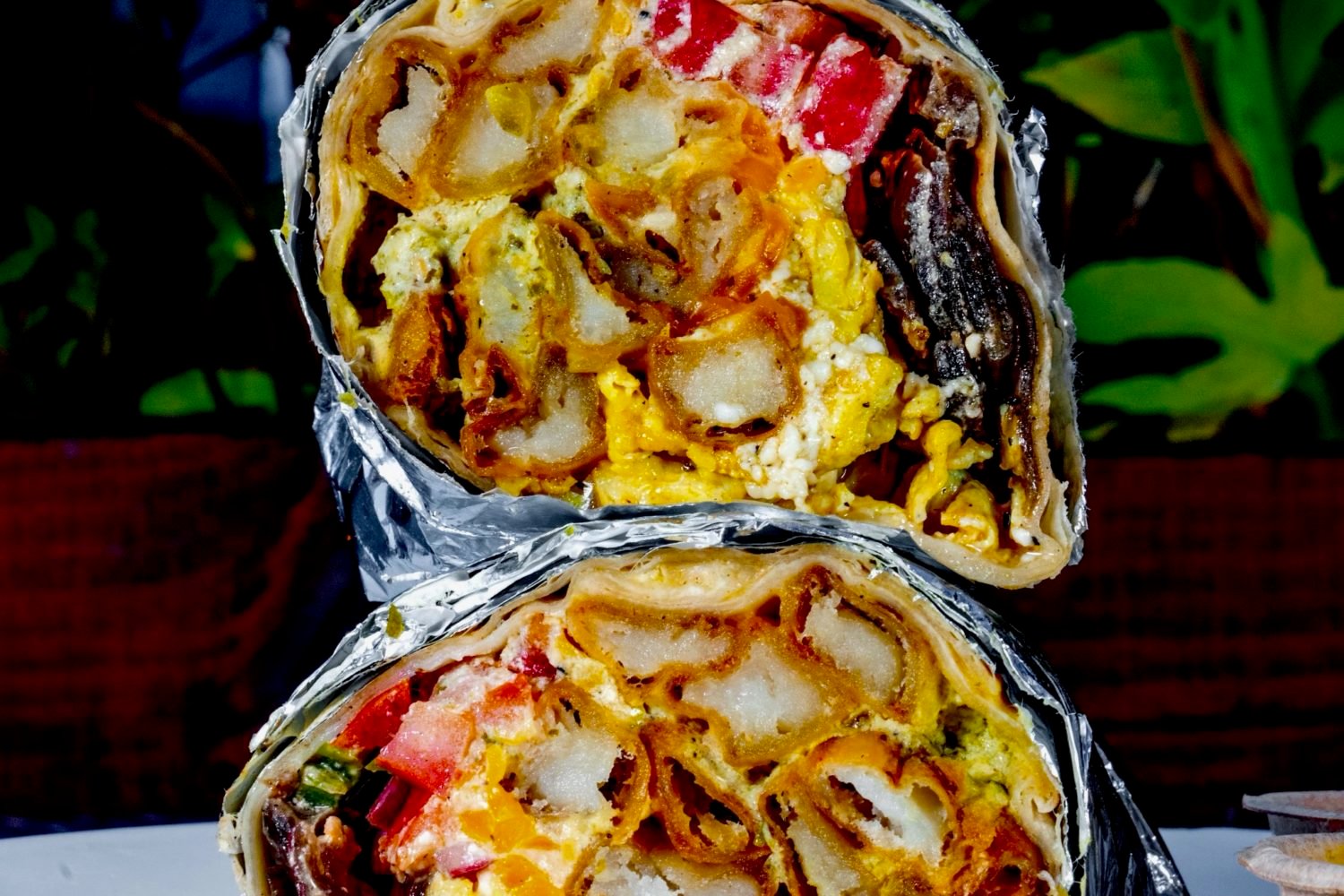
You’ve probably never heard of Rachel Laudan. This column hopes to change that.
Michael Pollan, Alice Waters, Mark Bittman, Jamie Oliver—these are the theorists and influencers who drive the debate in the food world. Laudan belongs in their company, though her thinking differs from their thinking. In fact, her thinking frequently takes issue with their thinking.
Reading her writing can be as bracing as taking a first, unsuspecting sip of mezcal. Fiercely unsentimental and deeply skeptical of conventional wisdom, she is relentless in her pursuit of a difficult truth and situates her sometimes unorthodox assertions in a thick and sticky web of historical and cultural context.

An historian and philosopher who currently is an affiliate visiting scholar at the University of Texas, Laudan made the rounds of the Internet last week with a piece called “A Plea for Culinary Modernism” on the website of Jacobin magazine, a bristling journal of original cultural thought. (It was reprinted from a 2001 piece she wrote for the food journal Gastronomica—five years before Pollan’s Omnivore’s Dilemma was published.)
The article, Laudan says, was “the kernel” for her book Cuisine and Empire: Cooking in World History, which came out last summer. I read it in preparation for a segment I guest-hosted in July for the Kojo Nnamdi Show, and was impressed and excited by her deep reading of the past, which she brought to bear in her penetrating analysis of contemporary food culture. The New York Review of Books called it “a triumph, pointing the way to a wholly new kind of historiography that can hold its own with more familiar work on political, economic, social, and intellectual history.“
Laudan is the author of two books, has won fellowships from (among many others) the National Endowment for the Humanities and Fulbright, and has taught in many parts of the world, including a year in the Niger Delta of Nigeria; ten years in Hawaii; and 15 years in Mexico. She also has spent extended periods in France, Germany, Spain, and Argentina.
As tweets about the piece piled up, surprising and shocking Laudan—think pieces in bristling journals don’t generally lead to lots of tweets—I asked her whether she would consider taking some time to do another interview, examining some more of her ideas and tackling some of the questions that were raised for me by her piece.
Why aren’t there more pieces that touch on these ideas?
If by “these ideas,” you mean the benefits of modern food and ways to correct the problems, I’m as baffled as you are. There are more than there used to be. I think of Marc Brazeau’s Food and Farm discussion group on Facebook, blogs by the Fat Nutritionist, Jayson Lusk and the Ecomodernists, Thomas R. DeGregori’s long article “In Defense of Modern Industrial Agriculture,” Emma Marris’s work, some of Nate Johnson’s writing for Grist, David H. Freedman on junk food, Alan Levinovitz’s The Gluten Lie, and of course your piece on local food. And of course there are dozens of books on particular issues such as GMO, or BPA, or nutrition.
Most of these authors focus on farming, ecology and the environment, or on nutrition.
Where I differ, I think, is that I concentrate on what happens after slaughter, after harvest. And because the language of food is so emotive, I think it’s essential to talk a bit about that language before we go further.
Farm products are not food; they are the raw materials for food. Turning plants and animals into something edible is just as difficult, just as laborious as farming itself. Very few of our calories come from raw, unprocessed food. And if those calories are from fruits and vegetables, then it’s only because centuries of breeding has made them less chewy, more tasty, and easier to digest. Cooking, which is one part of processing, went hand in hand with becoming human. Human food is processed food. And there are good reasons for this. Overall, processed foods are easier to eat and digest, more nutritious, tastier, safer, and longer lasting. The idea that any change made in the raw material is detrimental is just flat wrong.
The cost of processing is the labor involved. Because the labor of processing–the cutting, the grinding, the pounding, the skinning, the cooling–is now largely done by machines long before products reach the store, it has become invisible. Cooking is now simply assembling a meal from processed ingredients, from meat that is cut to size, vegetables without a trace of dirt or insects, and pasta in a box. That we can talk about “A cake made from scratch” when the butter, sugar, and flour that go into it are are highly processed shows how we have lost awareness of the energy that formerly went into food preparation.
I can see some people reading a piece like this and saying: Well, clearly she has an agenda. They might not be aware of your work over many, many years, your meticulous and exhaustive study of the historical record. How do you answer? And talk to me briefly about that historical record, and how it has guided your work.
Well, yes, I do have an agenda. It´s to restore some sense of the benefits of modern food so that we do not waste time and energy trying to turn back the clock but can continue to improve our food system and disseminate those improvements as widely as possible.
As to history, I grew up a few miles from Stonehenge on land that had been farmed for four thousand years. I watched my father farm and my mother cook, living the life that many now yearn for. Eggs from bantams that roamed freely, raw milk from the dairy, fruit and vegetables from the garden, orchard, and hedges.
Much of this life was wonderful, much of it was a straitjacket from which I was determined to break out.
So my career has been one long attempt to escape from the weight of that past, ironically perhaps by understanding the past. As an undergraduate, I studied geology, the most historical of the sciences, and learned more about the land on which we depend. As a graduate student and professor, I studied and taught history of science and technology, social and economic history, and world history. What better preparation for the history of food?
It seems to me that the real subject of this piece is sentimentalism, romanticism, and nostalgia. How prevalent are they in the food world, do you think? And is this something recent we’re seeing, or does this have roots in something older?
Absolutely right that it’s romanticism and that it has older roots. Pollan’s three rules (“Eat food. Not too much. Mostly plants”) had already been advocated by Rousseau in the middle of the eighteenth century. Rousseau praised the peasant diet. According to him, the sturdy inhabitants of Swiss valleys grew tall, strong on milk straight from the cow and vegetables straight from the garden. Not for him aristocratic French dining with cooks who disguised meat with sauces to titillate the nobility into overeating and obesity.
Aristocratic culinary philosophy was quite different. The lucky few who had the privilege of dining on high cuisine believed you literally were what you ate. For them, the peasants praised by Rousseau were coarse because they ate coarse food, dark bread, or bread of chestnuts, whole grain porridges, and vegetables, a diet that their rough constitutions could digest. Eating coarse food or raw food was to be avoided at all costs because this would bring them down to the level of peasants or even animals. They, the aristocracy, ate refined food, which had been cooked to make it more appropriate to their delicate stomachs. White bread, rich meaty dishes with fine sauces, and sweets were the sign of status and the civilized life.
In short, the color of your bread reflected and determined your social class.
Rousseau’s political philosophy, including his culinary philosophy, was one of the various challenges to monarchism and its aristocratic dining. Very few people, however, took it seriously. Why? Perhaps because they recognized that his account of the peasant diet was hopelessly idealized. And perhaps because they realized that processing produced real benefits.
Far more important was the (small r) republicans’ challenge. Drawing on ideas that went back to the Roman republic and the Christian fathers, republicans in European and the American colonies argued that in a republic, all citizens would enjoy an ample, well-cooked, diet. Yeoman farmers, not peasants and serfs, would produce the raw materials of the diet. The thrifty housewife would contribute to the economic stability of the state by eschewing the exorbitantly expensive and obesity-inducing meals of the aristocracy. She would contribute to the health of its citizens by preparing nutritious meals. The family meal would replace the aristocratic banquet. Conversation around the table would introduce children to their duties as citizens.
In the United States, this became the policy of the young republic. Family farms were encouraged, family meals advocated. Sarah Hale promoted Thanksgiving to offer an alternative to the growing number of French restaurants in cities. Even diplomats were warned off offering aristocratic French cuisine. By the 20th century, the efficient American family-sized farm, government support for agricultural research and home economics, the industrialization of processing, meant that America had one of the best and most equally fed populations in the world. And with in spite of many backward steps and bumps along the way, it has continued along that path.
So republican culinary philosophy morphed into liberal democrat culinary philosophy of the early 20th century or what I am calling culinary modernism. And let me be clear about what I mean by modern food. It has three components. First, modern food is a characteristic, admittedly spottily, of more egalitarian societies. Second, it uses fossil-fuel powered machines and tools to produce plentiful raw materials and to prepare them, bringing down the cost of food. Third, it takes advantage of modern science, whether it be the science of starches, sugars, oils, and so on or whether it be nutrition science.
The big breakthrough to modern cuisines came between 1880 and 1920. It was the most important change in human eating since the shift to grain-based diets that was the necessary condition for agriculture, cities, states, and hierarchical, aristocratic cuisines. The three elements of modern cuisines were mutually reinforcing, as I lay out in detail in Cuisine and Empire. More people freed up from subsistence agriculture meant a larger market for quality products and in turn a healthier citizenry.
(The main alternative that I should quickly mention was socialist or communitarian culinary philosophy. Socialists, whether utopian socialists such as Robert Owen in England, Charles Fourier in France, or Edward Bellamy in the United States, as well as Christian groups, proposed instead that growing, preparing, and consuming food should be done communally. For them, neither fine French dining nor family meals were appropriate. Instead it was the community around the table. Their political success came a century later than the republicans with the Soviet Union, Israeli kibbutzes, Latin American land re-distribution schemes, and Maoist China. Like the republicans, they appreciated industrial processing as the only way to bring all to the same table.)
Your analysis of processed food and the way it evolved is fascinating. The way I read you, you’re not saying that Michael Pollan and others are wrong in wanting to change our food system. You’re saying that their proposed solution is wrong –ahistorical, classist, dangerous.
There’s the saw that today’s problem is yesterday’s solution. The food we have today is the solution to how to create a republican, reasonably egalitarian cuisine. It was a tough challenge. Coarse, limited diets, periodic hunger, malnutrition, and famine had been the condition of much of the world’s population since the first farmers. Yet the success of more egalitarian political systems, whether republican, democratic, or socialist, depended on breaking this dismal pattern.
The solution, it turned out, was to industrialize processing (and also agriculture but that’s not my focus). What does that mean? Nothing more or less than the use of fossil fuel to drive the mills that grind grain or press oil seeds or grapes for wine, to move the conveyor belts that take bread through bakeries and carcasses through slaughterhouses. This transferred the heavy work from unreliable wind and water power or relatively weak animal (including human) power to machines. It brought down the price of processing, and made palatable, inexpensive food available year round. And famine vanished and diets and health improved. So the industrialization of food processing was seen as a wonderful solution to what most of history had seen as an insoluble problem.
But post World War II, as first the United States, then Europe and Japan, and increasingly the rest of the world become unimaginably wealthy by world historical standards, cheap calories look, well, just cheap. The solution turned into a problem. White flour, white sugar, red meat, first luxuries for aristocrats, then basic staples for all citizens, entered a third phase as nutritionally suspect and ecologically undesirable. Hunger proved harder to eradicate than expected. And reliance on fossil fuels also poses problems, even if this is not peculiar to food but to the whole of modern life.
Without historical perspective, it was easy to assume that delicious foods in the past reserved for the wealthy (tasty sauces, sweets, fresh fruits) or available only seasonally (tomatoes, milk, eggs, fruit) had been the norm. And since they had been made by hand or appeared to be only lightly processed, then down with industrial processing and cheap calories. And it was easy to forget that many delicious foods, chocolate and wine spring to mind, are among the most highly processed of foods.
So industrial processing became a shorthand for bad food. Another example of how language can lead astray. Artisanal versus industrial does not map on to good versus bad food. And in my opinion, the way to solve what are now seen as problems–too high a consumption of highly refined fats, sugars, and oils, for example–is not to reject industrial processing but to turn it’s extraordinary resources to make higher quality foods available. And that’s happening.
Some would say, well, yeah, sure, processed food in this country was of enormous benefit to this society — up to a point. It created a vast middle class, which enabled the country to prosper. It got us through two world wars. But then agribusiness got bigger and bigger, and the corporate presence in post-war American life got bigger and bigger, and processed food expanded and became omnipresent in our lives. Can’t it be argued that the revolt we are seeing from the Slow Fooders and others is, in a sense, an attempt to restore processed foods to a more manageable, healthy place in our lives?
This is the comment I get all the time. “Well, nobody wants to go back to the distant past. But things have gone too far.” I disagree.
Think about the domestic kitchen. In living memory, in my youth, admittedly in post-war Britain but still one of the richer parts of the world, there were no supermarkets, and shopping could take hours. The only fresh fruit for much of the year were apples, oranges and bananas. Salads only appeared in summer. Canned goods were expensive and reserved for emergencies, frozen foods did not exist, and pasta was unavailable. There were no small electric gadgets, no toasters, no blenders, and, for many, no refrigerators, let alone microwaves. There was no detergent for washing up, no aluminum foil, saran wrap or tupperware for storage.
The changes have come about because of efficient farms, a huge investment in a cold chain infrastructure to get fresh food to consumers, factories to make pasta and kitchen equipment and aluminum foil, and government regulations and inspectors to monitor safety.
Yes, there are reasons to be wary about big organizations. Organization theory has made it abundantly clear that whatever the explicit goals of organizations, many other goals get followed. Businesses have to make money for their shareholders and satisfy their customers but managers also want to shore up their positions. Government agencies have to serve the public but civil servants also compete to increase their agency budget and prestige. None of this is specific to food. In complex modern societies, it’s hard to do without complex organizations.
And there are equally reasons to be wary about small. I’m not the only one to have been passed a bad melon or worried that an ice chest is not the best way to keep lamb kidneys in 100 degree heat at a farmer’s market.
Your piece is titled “A Plea for Culinary Modernism.” In the food culture now, modernism is generally associated with such figures as Ferran Adrià, the chef, and his acolytes in Spain and the US, and Nathan Myhrvold, the tech impresario who wrote a mammoth six-volume cookbook touting the virtues of using hitherto untapped scientific techniques to make food taste better. Myhrvold, in fact, argues that he espouses “modernism” and not the term preferred by the press “molecular gastronomy.” The reaction to this movement has been one of awed amusement–at best–or even hostile disdain. But do they tell us anything about romanticism, sentimentalism, and nostalgia in the culinary realm? Or, if that’s too far afield for you: Where do you see your work in relation to theirs? And what do you think accounts for the reception to these ideas in the US?
In some ways, I wish I had called my piece something else. Modernism is too closely related to aesthetic movements. I’m not sure, though, what that something else would have been because modernity, the obvious alternative, is an academic hot potato.
How does my work relate to Adrià, Myrhvold’s, etc.? I am not averse to having chefs or food scientists play with expensive or obscure new techniques. In fact, I think it’s essential. Moving forward with food means developing new techniques for turning raw materials into edible, palatable, digestible, nutritious foodstuffs and dishes. That’s never been easy. In fact, it’s usually been difficult and often even sounds disgusting. Treating maize with a strong alkali so that you can make flexible tortillas would be an early example. Among more recent ones are the use of nitrous oxide to create foams or alginate, a kelp extract, to create capsules. It was Adrià’s insight that these could be turned to culinary advantage to create foams and flavored spheroids. This took time and money. Many such high end innovations quickly become part of the everyday repertoire. The molten chocolate cake, twenty or thirty years ago the tricky showcase dessert of chefs, is now available in every supermarket freezer. Encouraging such experimentation is as important in food as it is in any other technological system. (Think computers.)
The modern romantic tradition, which runs from Elizabeth David through admirers such as Alice Waters and Paula Wolfert, to Michael Pollan and Mark Bittman paint the use of modern science and technology in food as inappropriate, distasteful, and dangerous. I think it’s essential.
One way to look at the Slow Food movement—one cynical way—is to say that the people who are devoted to it don’t really have any intention of changing the system at its roots, they just want to be able to improve their own lot in life when it comes to food. I see a lot of celebration of heirloom, a lot of educational interest in artisanal, a lot of engagement in thinking about farming and the land, etc. A lot of talk of eating well, eating righteously, as a path to self-actualization and even a kind of spiritual fulfillment. Am I just being cynical?
The romantic tradition from Rousseau to Pollan has been mainly concerned with eating as a way to self fulfillment or redemption. If we eat right, the assumption seems to be, we will feel better both physically and spiritually. We will feel a sense of connection to nature. And this will spill over in unexplained ways to changing the world for the better. Now I admit that’s a bit of a caricature but no more of a caricature than, say, this group’s repeated assertion that ingredients with unpronounceable names are dangerous.
Two events stick in my mind. One was the New York Times challenging Michael Pollan and Michael Moss to prepare a “reasonably healthy” meal from ingredients that could be found in any supermarket. It’s hard to know whether to laugh or cry. The modern American supermarket is crammed with a greater selection of safe and healthful foods than any institution in history: a wide range of grains, the traditional dietary staples; beans and lentils, fresh vegetables, fresh fruits, dairy products. To suggest that it’s difficult to put together a good meal from this abundance is an insult to the many farmers, processors, packers, drivers, buyers, safety officers, and a multitude of others who work to make that food available. And it makes any dialogue with the food industry about what needs improvement and why and how impossible. That’s not their intent, I am sure. Naturally, they have a lot of prestige and income at stake, but even so I have no reason not to believe that they are the best-intentioned of people who really care about the food supply. I just happen to think their culinary philosophy is misguided.
The other is in the much-lauded book by chef Dan Barber, The Third Plate. Seeking an example of sustainable agriculture, Barber flies to Spain to talk to farmers who raise the pigs for jamón ibérico. He gives a lovely description of the oaks, the pigs that feed on acorns, and a peasant. “It’s not the picture of riches, but I’m telling you he’s very rich,” says his guide. Pure romanticism. The peasant who has no need to care for money, who is rich in being able to add a little slice of ham to his daily soup. This is in the region called Extremadura. It’s hard country, hard to eke out a living farming. Many of the conquistadors were fleeing from its poverty, like many before and after them.
For sustainable agriculture, it seems a perverse choice. Why not go to northern France or southern England where for thousands of years the soil has yielded rich harvests? And where soil fertility is still increasing? Perhaps because farmers in northern France and southern England use combine harvesters, fertilizers, and pesticides? Perhaps because they make decent livings by farming? That they are not picturesque peasants but prosperous businessmen?
Do you think the absence of talk about food and class can be correlated to the general assumption in the U.S. that we live in an essentially classless society? In other words, we pretend or simply don’t see the divisions that exist between the classes; we abide by the belief that because some people can move up the ladder, the distinctions are therefore unimportant. In the world of food, we are often told, the last 40 or so years brought about a toppling of the old order, the old aristocracy, the inherited stuffy European notions of dining. In large measure thanks to Alice Waters and her followers. The thinking seems to be that we no longer have hierarchies. We no longer have divides. Fine dining has been defeated. Etc. But inevitably—this is the course of history, right?—new orders emerge; there are always hierarchies; every regime enforces what is good and what is not, what is acceptable and what is not.
Big questions. Choice of places to shop for food, choices of ingredients and dishes, choice of restaurants are all clearly ways to express class in the US. The snobbery that goes along with the choices can be irritating. And the use of phrases such as “how can we get them to eat better” set my teeth on edge. That said, I am not terribly worried about cuisine as a marker of class in the US. Since the physiological underpinning to culinary class politics that I mentioned above has been abandoned, class itself is no longer thought to be determined by eating habits. It’s access to good jobs, education, and the like that are essential for social mobility. Cuisine is just simply one more way of defining yourself. That actually can give a lot of freedom.
What worries me much more is that the sharp culinary divisions between classes that used to exist within states have now shifted to sharp culinary class distinctions between states. In the US and other rich countries, everyone has access on occasion and if they wish to meat and white bread, unimaginable luxuries for most people for most of history. Even a fancy restaurant meal costs much the same as tickets to a football game or a flight to see relatives, not available to all, perhaps, but to most. Compare this to poorer countries. The real food challenge facing the world is making sure that poor countries can make the transition to modern food. If that can’t be met, it’s a recipe for trouble.
A little thought experiment to bring this to a close. I’ve been given special powers, and I appoint you czar (funny, isn’t it, how we have so many appointed czars in this unaristocratic country) of food in the US. What is your first order of business? What sorts of laws do you push for? What public statements do you make? What is your 5-year plan? Your 10?
Me? A czar? My first order of business would be to go to the bathroom and throw up in sheer terror. I’m not a fan of appointed czars or of five-year plans. I am a fan of incremental changes. Look what’s happened in the 15 years since I wrote the article. Walmart’s become a major player, so has Monsanto, celebrity chefs, sustainability, and locavore have become household words, fats and sweeteners have been vilified and un-vilified, and now Taco Bell is removing artificial flavoring and coloring, corporations are scrambling to make their products appealing to those who want healthful and organic foods, and McDonald’s is in trouble. No one could have predicted or managed these changes. And many have happened through the power of the word. So I’d turn down the offer. The pen is mightier than the czar!
Otherwise is Washingtonian food critic Todd Kliman’s weekly column. Sometimes it will be about food.






